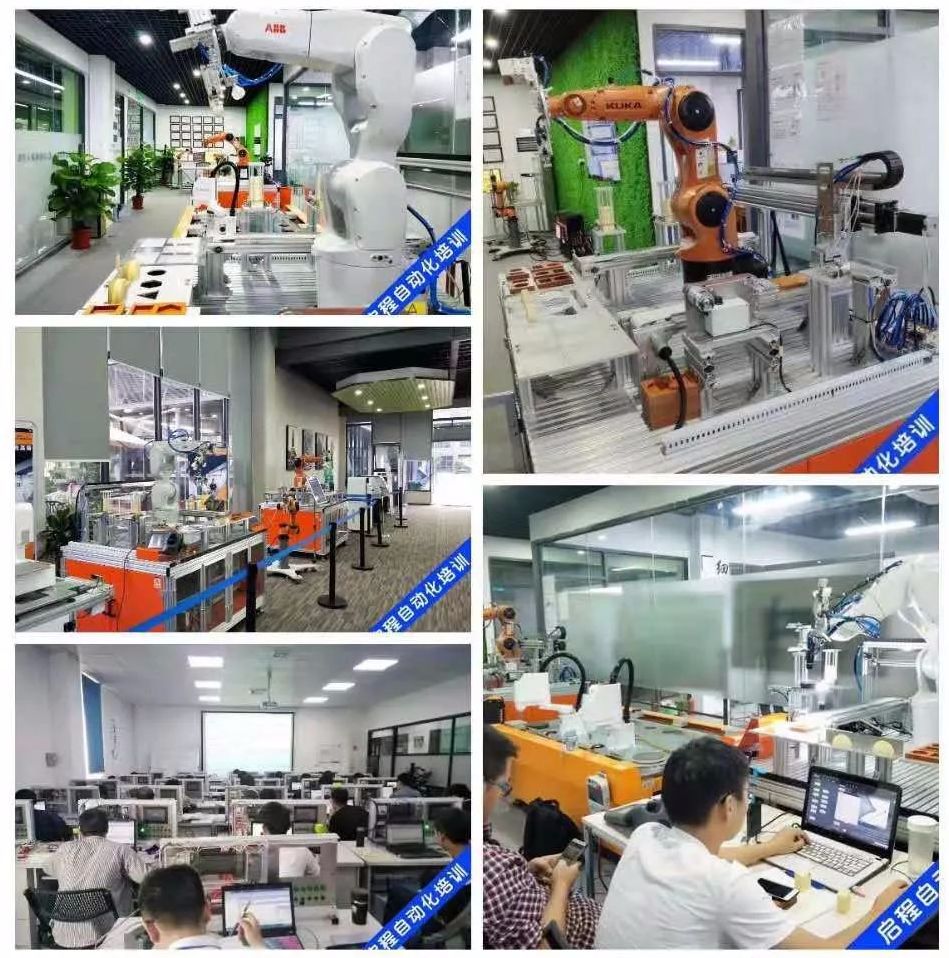
With the rapid development of industrial technology, Distributed Control Systems (DCS) and Fieldbus Control Systems (FCS) have emerged. Some in certain industries believe that FCS has evolved from PLC, while others think that FCS has developed from DCS. There are both inseparable connections and essential differences between FCS and PLC as well as DCS.
The three major control systems in industrial process control are PLC, DCS, and FCS.
PLC (Programmable Logic Controller) is a digital operation electronic system designed specifically for industrial applications. It uses a type of programmable memory to store programs internally, execute logical operations, sequential control, timing, counting, and arithmetic operations, and control various types of machinery or production processes through digital or analog inputs or outputs.
DCS (Distributed Control System), also known as Computer Distributed Control System, rapidly developed in the mid-1970s. It integrates control technology, computer technology, image display technology, and communication technology, also referred to as 4C technology, to monitor, control, and manage production processes. It breaks the limitations of conventional control instruments and effectively addresses the dangers posed by the early computer systems’ overly centralized information, management, and control functions.
The core of the FCS (Fieldbus Control System) is the bus protocol, based on digital intelligent field devices, and its essence is localized information processing.
Basic Characteristics of Process Control Systems Composed of Large PLCs
(1) A top-down structure where PLC can function as an independent DCS or as a subsystem of DCS. (2) PID is placed in the control station, enabling various functions such as continuous PID control.
(3) A PC can serve as the master station, with multiple same-type PLCs as slave stations; alternatively, a PLC can serve as the master station with multiple same-type PLCs as slave stations, forming a PLC network.
(4) Primarily used for sequential control in industrial control, while new PLCs also have closed-loop control functions.
DCS Control System Basic Characteristics
(1) A top-down tree structure where communication is key.
(2) PID is in the interrupt station, connecting computers with field instruments and control devices.
(3) It features a tree topology and parallel continuous link structure, with numerous cables running from relay stations to field instruments.
(4) The signal system includes discrete signals and analog signals.
(5) DCS has a three-level structure consisting of control (engineer station), operation (operator station), and field instruments (field measurement and control station).
Basic Characteristics of FCS Control Systems
(1) FCS is a fusion of 3C technology, suitable for intrinsically safe, hazardous areas, variable processes, and challenging environments.
(2) Field devices are highly intelligent, providing all-digital signals; a single bus connects all devices.
(3) A bidirectional digital communication bus from the control room to field devices, interconnected, bidirectional, serial multi-node, and an open digital communication system replacing the unidirectional, single-point, parallel, closed analog systems.
(4) Control functions are thoroughly decentralized.
Comparison Between DCS Control Systems and PLC Control Systems
DCS is a “distributed control system,” while PLC is merely a control “device”; the difference lies between “system” and “device.” A system can realize the functions and coordination of any device, while a PLC device only realizes the functions possessed by its unit. In terms of networking, the network is the central nervous system of the control system.
DCS systems, like the HOLLiAS MACS system, are divided into two levels: system network and control network. The system network connects field control stations with system operator stations, while the control network connects field control stations with intelligent I/O units, ensuring real-time reliable information transmission.
On the other hand, since PLCs primarily operate individually, their network forms for communication with other PLCs or upper computers are generally single network structures. In terms of network security, PLCs do not have good protective measures.
DCS systems are designed with numerous expandable interfaces, making it convenient to connect external or expanded systems. Once the entire system connected to PLC is completed, it becomes challenging to arbitrarily add or remove operator stations. To ensure the safety and reliability of DCS control devices, DCS employs dual redundant control units. When a critical control unit fails, a corresponding redundant unit seamlessly switches to work, ensuring the overall system’s safety and reliability.
PLCs lack the concept of redundancy, let alone redundant control strategies. Especially when a particular PLC unit fails, the entire system must be stopped for replacement and maintenance, requiring reprogramming. Thus, DCS systems are a level higher in terms of safety and reliability than PLCs. The hardware reliability of DCS and PLC is similar. The advantage of PLC lies in software; PLC employs a sequential scanning mechanism, dominating high-speed sequential control. The cycle period of PLC is around 10ms, while that of DCS control stations is around 500ms.
Implementing sequential interlocking functionality is a weakness for DCS compared to PLC, and its logic execution speed is not as fast as PLC. Relatively, systems composed of PLCs are more cost-effective. The field control station layer of DCS typically adopts centralized control. Although it supports remote distributed I/O, it is rarely used due to cost reasons, while PLC’s remote distributed I/O based on fieldbus is smaller, more flexible, and user-friendly, effectively saving wiring costs.
Comparison Between FCS Control Systems and DCS Control Systems
FCS can be said to possess the characteristics of both DCS and PLC, while also making a revolutionary step forward.
(1) FCS is an entirely open system, with open technical standards. The field devices of FCS have interoperability, and devices are compatible with each other, allowing users to choose products from different manufacturers and brands for optimal system integration; DCS systems are closed, and products from different manufacturers are incompatible.
(2) FCS’s signal transmission is fully digital, allowing communication from the lowest level sensors and actuators to the highest level, providing strong support for the enterprise’s MES and ERP. More importantly, it can also perform remote diagnostics, maintenance, and configuration of field devices; DCS’s communication functionality is highly limited. Although it can connect to the Internet, it cannot reach the lowest level, and the amount of information it provides is limited, and it cannot perform remote operations on field devices.
(3) FCS has a fully decentralized structure, eliminating I/O units and control stations in DCS, delegating control functions to field devices, achieving complete decentralization, and making system expansion very easy; DCS’s decentralization only extends to the controller level, emphasizing the controller’s functionality, with data highways being its key.
(4) FCS’s fully digital control system has high precision, achieving ±0.1%; while DCS’s signal system is binary or analog, requiring A/D and D/A links, thus its control precision is ±0.5%.
(5) FCS can place PID closed-loop functionality in field transmitters or actuators, combined with digital communication, shortening sampling and control cycles, currently increasing from 2-5 times per second in DCS to 10-20 times per second, thus improving regulation performance.
(6) Since FCS eliminates a significant amount of hardware, cables, and auxiliary installation equipment, it saves substantial installation and debugging costs, making its cost far lower than that of DCS.
FCS is an open, fully distributed, intelligent control system. However, traditional DCS and PLC systems have been in use for decades and have evolved into practical, highly reliable systems. As they develop, both systems show a trend of converging towards each other. For instance, new DCS systems already have strong sequential control functions; new PLCs are also competent in handling closed-loop control, and both can form large control networks.
About Us: Qicheng Automation Training, China’s leading industrial robot training service provider
Contact Number: 13809869603
Training Projects:Robot + PLC System Integration + Machine Vision
Training Method:Offline Practical Training
Special Services: 3000 square meters practical training center + job recommendation + industry-leading curriculum
Address: Shajing 107 Huiju Chuangzhi Park, Baoan District, Shenzhen

+ Teacher WeChat, learn more about the course details
